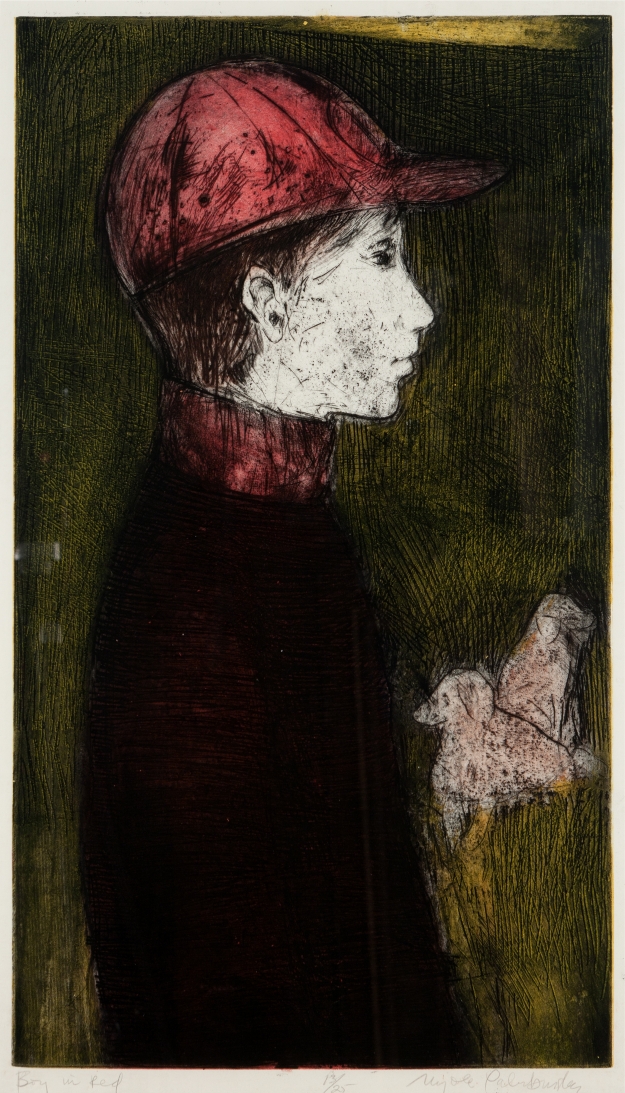At peace with yourself and the surrounding world
Artist Nijolė Vedegytė-Palubinskienė (b. 1932) is little known in Lithuania. She was born in Žuklijai (Paežerėliai rural district, Šakiai County). During the war the future artist and her family ended up in Germany, where she attended a Lithuanian gymnasium at a refugee camp in Hanau. In 1949, Vedegytė arrived in Cleveland (USA), where in 1950 she completed her gymnasium studies and in 1955 graduated from Cleveland Institute of Art (where Vedegytė studied painting and graphic art). After sixty years of emigration, the artist arrived in Lithuania where in autumn 2009 she held her solo exhibition at Antanas Montis House-Museum in Palanga.
UždarytiAs of 1970, encouraged by graphic artist Telesforas Valius, who once said that ‘graphics is the poetry of art’, Vedegytė-Palubinskienė devoted her career to graphic art. She used classical techniques of wood etching, linocut, etching, and monotyping, and created an entire series of artwork (Seaside, Michigan, Psalms, Allegheny Mountains, Parks, Man in the Park, Panoramas, etc.). The titles of her artwork suggest that her art is dominated by landscapes, whereas human figures appear in it only occasionally and most often surrounded by nature.
Vedegytė-Palubinskienė’s works radiate harmony and the plenitude of connection between nature and man. They can be labelled as elegies of nature. (Forest – Morning, Forest – Noon, Reflections, Mountain Shadows, Path by the Sea, Sunny Day, Mist, Blue Landscape). Everything is so simple and is so touching, with one’s ears open to the most subtle nuances of nature, and presented in black and white in etchings and in vibrant colours in monotypes.
‘I love portraying nature. As a child, I loved to lie in a meadow and watch the world around me,’Vedegytė-Palubinskienė said during her exhibition in Palanga. ‘When I am working on my art, images from Lithuania come back to my mind time and again. They are captured in my artwork, too. Sometimes I portray people –they are part of nature. In the series Park, which was exhibited at the museum, two human figures appear in every single piece of the series. Cleveland is a city full of parks. My artwork contains images of Lake Michigan and other places in America, but my subconsciousness contains numerous images from Lithuania, those little bits of nature that keep feeding me all the time.’
Boy in a Red Cap represents a fragile world of childhood rather than power, and is lyrical and chamber in nature.
The etching Boy in a Red Cap stands out among the rest of her artwork: presented from close-up with a tiny hint of nature and the concentration of a child. Still that same ever present feeling of harmony –harmony of the artist with herself and with the character, and the character’s harmony with nature –remains present here, too. Several colours –reddish, green, black and whitish –thrust through the dense web of the artist’s strokes. The form is extremely soft. It embodies the softness of the child’s world. The rest of the details are reduced to the minimum: there is an implicit animal next to the boy and the horizon line. It is not a psychological portrait of a child, but rather a generalised image of childhood. Its classical composition and light, elevated mood and elements used to characterise a person remind of a classical portrait of the early Renaissance period when artists returned to nature again, learned to precisely convey space, light and shadows, natural postures and human feelings, and tended to paint people in profile view. Just like the portraits of the early Renaissance period, this work by a Lithuanian expatriate artist is full of inner light and elevated mood. And just like the paintings from the early Renaissance period which pretended to perfection, this work is especially sincere and often moves stronger than the paintings from the mature Renaissance period.
European portrait art conveys reality, unique personal features and individual identity. Nonetheless, like the famous German art historian Erwin Panofsky once said, it also ‘strives to reflect all that the posing person has in common with the rest of humankind’. This makes the genre conservative and following only a few arbitrary formats. Profile view portraits flourished in the past when they were used on coins. They often appear in the 15thcentury, too. The difference is that throughout all of history painted portraits were usually commissioned for the rich and the powerful, but the Boy in a Red Cap represents a fragile world of childhood rather than power, and is lyrical and chamber in nature.
Vedegytė-Palubinskienė held dozens of solo exhibitions and took part in group exhibitions organised at famous American museums, and was awarded prizes at numerous exhibitions. In 1982, she was awarded the Prize for Culture of Lithuanian Doctors in Ohio, and in 1990 received the Award of the Ohio Arts Council for the Arts in Ohio.


